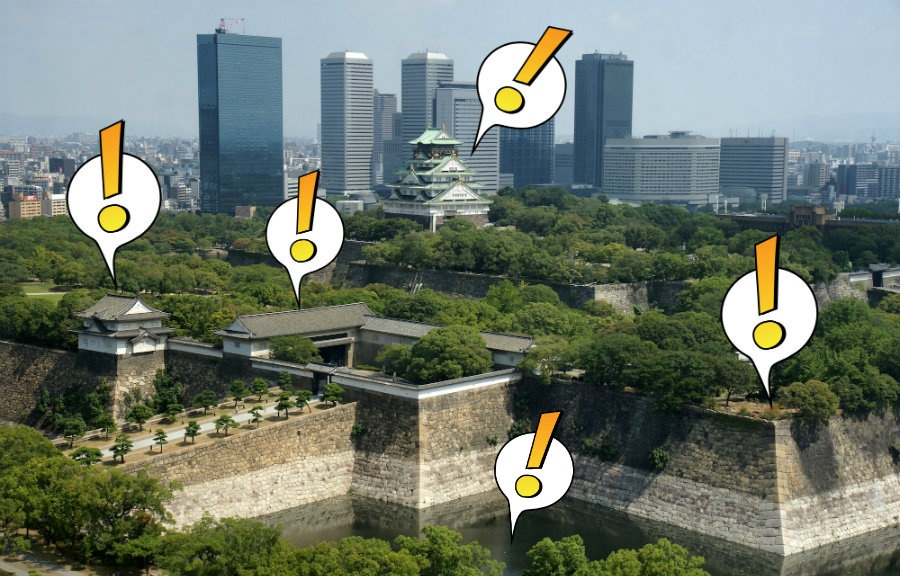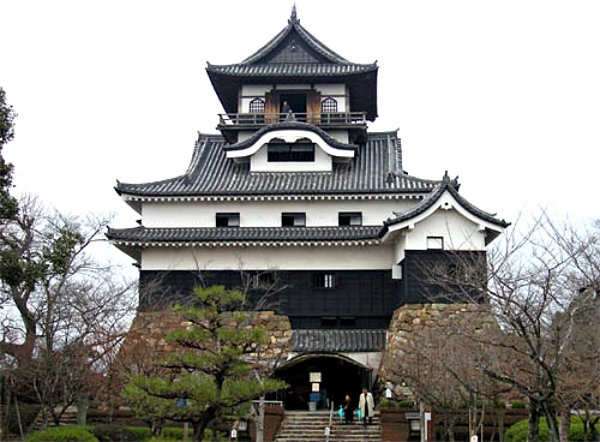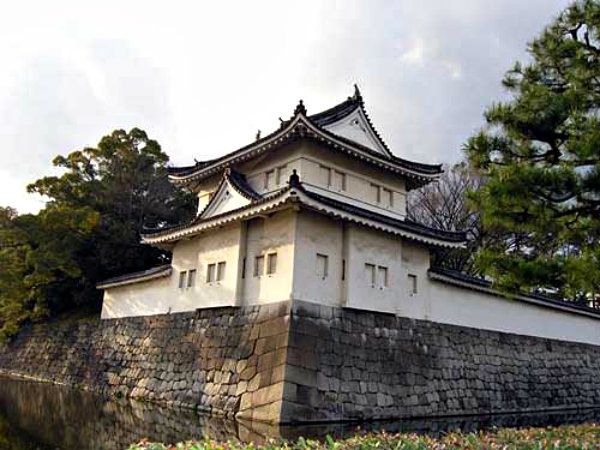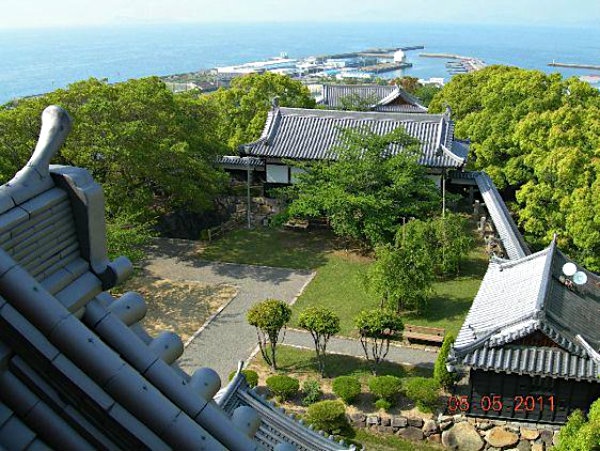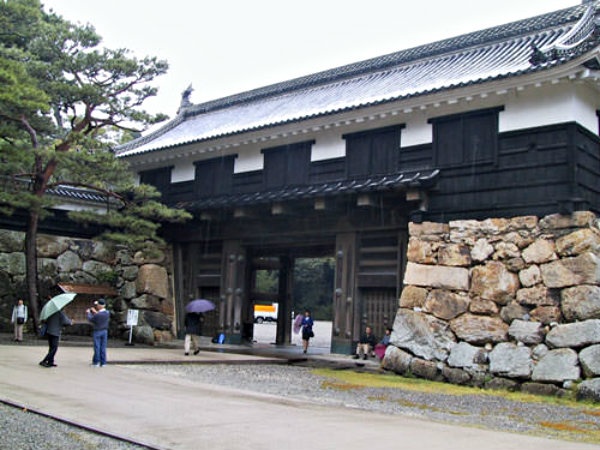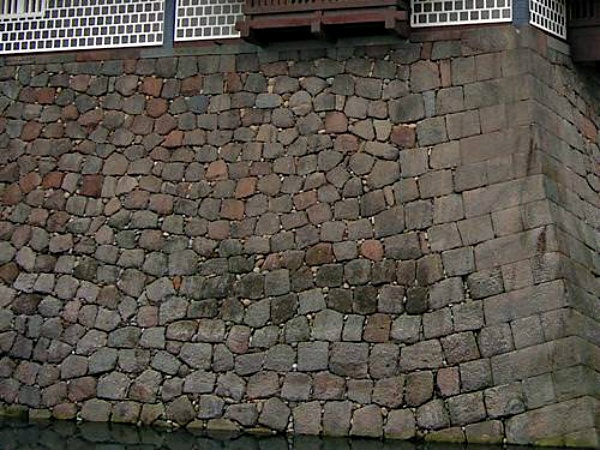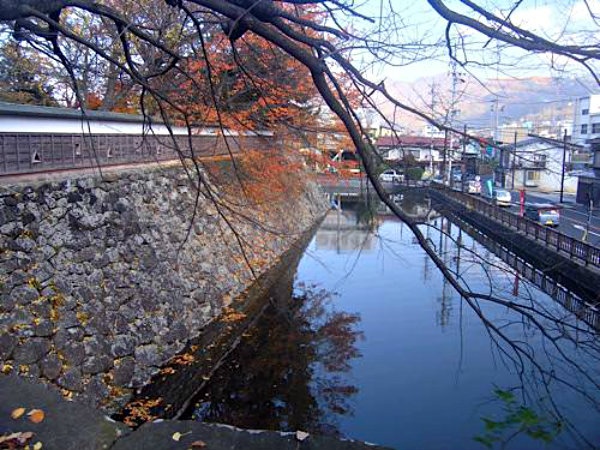Key Castle Vocabulary
With their design and construction becoming increasingly specialized over time, Japanese castles also developed increasingly specialized vocabulary for all the parts that made them up. You can find the basics below, with links to more reading as suits your level of castle-otaku interest!
By JcastleTenshu — Main Keep
The large tower seen in many pictures of castles is the main keep, or tenshu (天守), sometimes also referred to by the French term donjon. The keep is nestled in the most central courtyard among the maze of moats, walls, gates and courtyards that make up a castle.
The main keep is not the castle itself: it's only one part of the castle. In fact, not all castles even had a main keep. Many early castles or mountaintop castles did not have one.
When a main keep was burned down by fire or destroyed in an earthquake, it was sometimes not rebuilt. This was because during the relatively peaceful times of the Edo Period (1603-1868), the main keep was less important than in earlier times, and the costs may have been too prohibitive—or in some cases the Tokugawa government simply wouldn't give permission to a lord to rebuild the main keep. During the Edo Period, lords were required to get approval for any major improvements to their castles.
Main keeps were built on top of a high stone foundation or along the top of the stone wall on the edge of the main bailey. Like all Japanese architecture, castles relied heavily on wooden construction. This made them much more vulnerable to fire and artillery than the stone keeps of European castles. The exterior walls of most main keeps, as well as other castle fortifications, were covered with thick layers of plaster for protection from fire and artillery. Even so, a great many castles have burned to the ground from fires caused by earthquakes, lightning or attack. The fear of fire was so prevalent that tiger-headed carp talismans, called shachi, were mounted on top of main keeps and many other fortifications to protect them from fire.
For more on the different types of main keeps, check Jcastle below!
Yagura — Turrets
The Japanese term yagura (櫓) literally means a storehouse (kura) for arrows (ya), but yagura were used to store all manner of weapons, food and supplies.
Yagura weren't just storehouses, but vital defensive platforms and lookout towers that were placed at strategic locations throughout the castle. Most corners of a bailey had a yagura, often called a sumi yagura (corner yagura). These corners provided a wide field of view and two sides for flanking fire. The corner yagura also protected the vulnerable corners of stone walls, which were much easier to climb than the straight, sheer sides.
You can sometimes guess what was stored in a yagura or its purpose from the name, such as teppo yagura (guns), hata yagura (flags), yari yagura (spears), shio yagura (salt), among many others. There were also other special-function yagura, such as taiko tagura, which kept a drum to sound out the time, tsukimi yagura for viewing the moon, and ido yagura for housing a well.
You can read more about the different yagura construction types at Jcastle below.
Maru/Kuruwa — Baileys
Like the Japanese words maru (丸, circle) and kuruwa (曲輪, bent loop) imply, a bailey is literally a circle around the main keep.
Castles can have any number of baileys, but generally they have at least three basic levels. These are called the honmaru (main bailey), ninomaru (second bailey) and sannomaru (third bailey).
Each castle is unique in its design, so each bailey is not perfectly positioned in the center of the next bailey. They're usually offset in one direction or another and positioned to work with the landscape in a manner that strengthens the castle. Sometimes they may all share one side, but each bailey goes out further than the previous one, making rings around the castle.
The picture above right shows the honmaru as viewed from the top of Kawanoe Castle in Ehime. You can see the walls make a ring around the main keep and work with the yagura to protect the castle.
Castles are not limited to these three concentric baileys, but often have other baileys inside these three, or baileys connected to the outside as well. You can see more bailey images at Jcastle below.
Mon — Gates
There are many different types of gates, or mon (門), but the basic construction is the same for all. Two columns (kagamibashira) that hold the gate doors are connected by a crossbeam (kabuki) across the top. Usually, the columns are joined to support pillars (hikaebashira) behind them to help prevent the gate from being pushed over backward.
The rest of the gate construction is developed from the gate's position, function and defensive needs. Gates were often strategically positioned in the walls of each bailey so anyone who attempted to enter the castle had to zigzag back and forth to reach the inner grounds and the main keep. Gates were often further fortified by bolting metal plates over them for strength.
You can see more on the different kinds of gates below.
Ishigaki — Stone Walls
Ishigaki (石垣) are one of the most impressive features of any castle. The skill it took to make them, from cutting and collecting the stones to actually building the walls in myriad shapes, terrains and locations, is truly remarkable. The fact that there are still so many stone walls remaining after hundreds of years is further testament to the skill of their builders.
You can read the history of a castle from its ishigaki. The type of stone tells you where it came from; markings on the stone tell you who it was cut or gathered for; and the method of building the walls can also tell you in what period they were constructed or by whom. Even in the same castle, you may see walls constructed with different methods, indicating who built them and when. You can also find unique stories buried in the stone walls at many castles, like the old woman who donated her grinding stone for the castle defense, or Buddhist statues that were procured from temples to fill in the walls.
You can find a description of the main styles and types of stone walls below.
Hori — Moats
One of the most important defensive structures of any castle was its network of moats, or hori (堀). Beyond the moats that immediately surrounded the main castle compound and baileys, there were sometimes moats that surrounded the whole castle and even moats further out to protect the castle town as well.
In modern times, these moats have been mostly filled in, but some live on as canals, or through place names such as Sotobori Street in Tokyo, which was built over the filled-in Sotobori, or "outer moat" of Edo Castle.
There are many different moat types based on their shape and construction, but you can read about the basic types below.
Other Castle Parts
If there's anything else you'd like to know about castle parts—from roofs and gables to interiors and other wall types—check the Structures page at Jcastle below!


